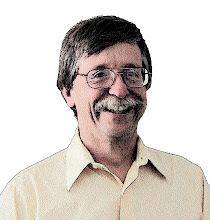 As of this writing, my database contains 18,392 distinct varieties of railroad and railroad-related certificates from North America. In case you're counting, that is 4,260 more varieties than was included in the second edition of my catalog published in 2003.
As of this writing, my database contains 18,392 distinct varieties of railroad and railroad-related certificates from North America. In case you're counting, that is 4,260 more varieties than was included in the second edition of my catalog published in 2003.Growing the database at this speed required contributions from interested collectors in addition to research into auction listings in the U.S. and Europe. 39,557 new sources of information were added to the database in the last five years counting all the various types of information such as serial numbers, prices, images, corrections, new companies, new varieties, new sub-varieties, etc.
28.5% of all new information came from contributions; the remainder came from personal discoveries. The lion's share of contributions come from collectors (90%) with the remainder from dealers (10%). Since most contributions include high-resolution images, contributions represent the most complete and valuable types of information I receive. I greatly appreciate every contribution and I try to respond as quickly as possible, even if it is only one certificate.
71.5% of my new sources of information come from auction catalogs, dealer web sites and, of course, eBay. Regardless of how much advanced collectors might like to downplay the role of eBay in the hobby, it has proven exceedingly important to me. In the last five years, one-third (!) of all my new information came from eBay. Unlike the information I glean from auctions and dealer sites, eBay information comes only from items that actually sold. I stress that I collect information only from sales that take place at $25 and above.
Information from professional auctions is valuable because those sales tend to focus on scarcer certificates. Unlike eBay sales, I record every identifiable certificate from auction catalogs. I record all prices regardless of whether certificates sold or not. Some auctions are very valuable for helping discover new varieties. R.M. Smythe's sales used to play a leading role in introducing new certificates to the hobby. There is widespread hope that SpinkSmythe will resume making similar contributions in the coming years. Thankfully, Dr. Robert Schwartz's sales (at Harmer and recently via Archives International) have filled a major part of the void left by R.M. Smythe and they have added vast numbers of new certificates in the last few years.
Items | Percent | Items | Percent | |
eBay auctions | 13,167 | 33.3% | ||
US auctions | 6.633 | 16.8% | ||
Euro auctions | 6,302 | 15.9% | ||
US dealer sites & catalogs | 2,054 | 5.2% | ||
Euro dealer sites & catalogs | 75 | 0.2% | ||
Other US | 22 | 0.1% | ||
Other Euro | 11 | <0.1% | ||
Total from discoveries | 28,264 | 71.5% | ||
US collectors | 7,267 | 18.4% | ||
Euro collectors | 2,903 | 7.3% | ||
US dealers | 779 | 2.0% | ||
Euro dealers | 344 | 0.9% | ||
Total from contributions | 11,293 | 28.5% | ||
______ | _____ | |||
Grand Total All Sources | 39,557 | 100% |
Information from dealer catalogs and web sites is somewhat problematic. Some items stay in place for years and we never know why. Items may be properly priced for their clientele and the dealers may have several copies for sale. Or items may be over-priced and not selling at all. Moreover, when inventory sells, we never know how much discount the dealers may have offered. In other words, all prices we see in dealers' web sites and catalogs are merely suggested prices and consequently of less value than those communicated by auctions and collectors.
In a few days, I will add another article similar to this one which will analyze where new varieties have come from in the last five years. I think you'll be a little surprised.

